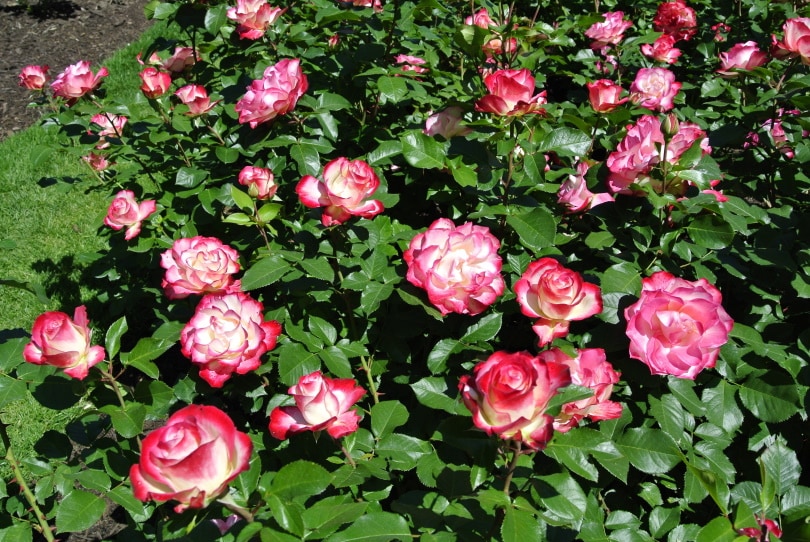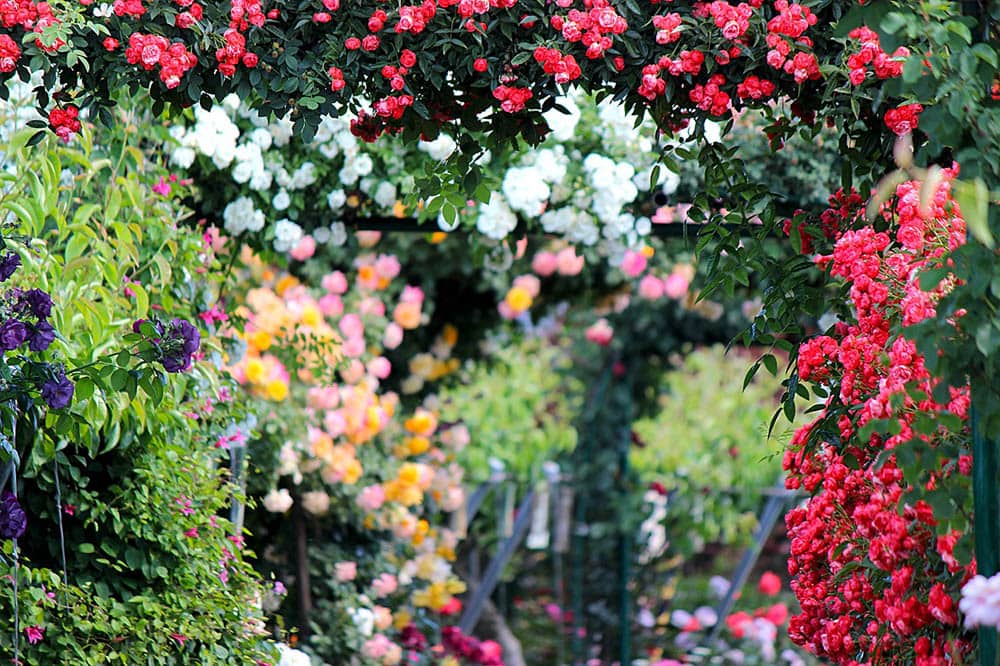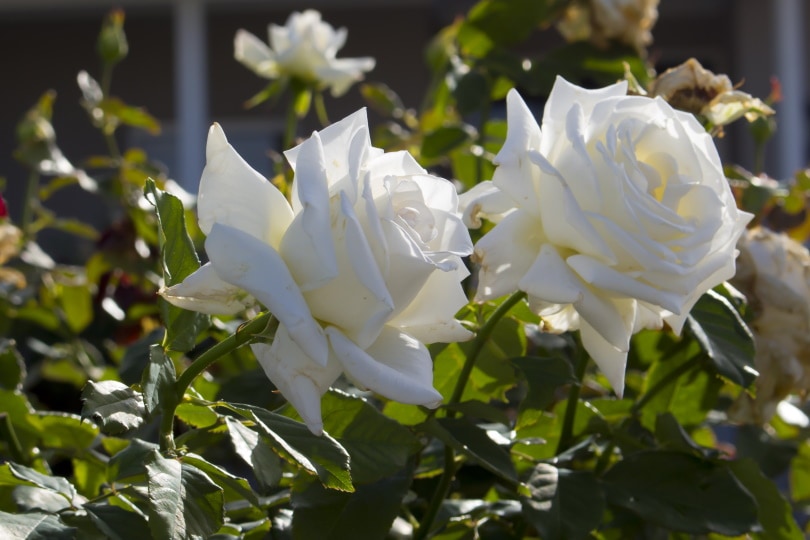When Do Roses Bloom? Seasons, Conditions, & FAQ
-
- Last updated:

Timing is everything when you want to plan stunning landscaping features, especially when working with a true showstopper like roses.
Roses can bloom in spring, fall, or several times during the season, depending on the variety. When chosen carefully, you can plan the perfect color to complement your other seasonal plants and create truly wondrous displays. We’ll help you make these blooming beauties a sensible feature in your garden by outlining when roses bloom and how long the season lasts.

When Do Roses Bloom?

Most rose varieties will bloom in spring, generally around May. Flowers appear about 6–8 weeks from when plants start to show new growth as the weather warms. They typically bloom about two weeks after the buds appear.
Blooms in most areas are at their fullest during the early summer in June. Location affects the blooming period, with roses arriving earlier in the South and later in northern states where the winter hangs around longer. They may bloom as early as April in Louisiana or Arizona but wait until June or even July in areas like Minnesota. Warmer places, such as Hawaii, have climates that encourage year-round growth.
How Long Does the Blooming Season Last?
Individual blooms last about 2 weeks on a plant before dying and giving way to the next growth cycle.
Traditional rose varieties, such as the Carolina rose, only have one blooming period, so gardeners put their efforts into ensuring a bountiful and long-lasting display. A rare few, including some that normally only bloom once annually, may have multiple distinct blooming seasons, once in the spring and once during the fall.
Most modern rose varieties bloom continuously in 6 to 8-week cycles.
- Hybrid tea roses
- Floribunda
- Grandiflora
- Climbing roses
- Shrub roses
When well-tended, they will provide three blooming periods or more, depending on the growing conditions. Some varieties, such as the hybrid tea “Peace” rose, also have shorter bloom cycles than others, letting you achieve more blooming periods in a single season. Flowers will stop growing around October and give way to rose hips, which many people dry or cook to use in jellies, teas, and desserts.

What Affects Bloom Time?
Opting for a repeat-blooming modern rose is the surest way of extending the blooming period. But you can also ensure the most abundant and lasting blooms possible by applying a few growing tricks and providing your roses with adequate care. Follow these guidelines to get the best results with your rose.

Location
Location is the most crucial consideration when choosing and planting roses. USDA zones 7–9 are the sweet spot for nearly all roses. Some cultivars, such as Rugosa varieties, are hardier than others and can survive in colder climates up to zone 3. Choosing a species of rose that thrives in your climate zone will be critical in ensuring they bloom as long as possible.
Sunlight
Roses can’t grow to their fullest potential if they’re starving for sunlight. They need at least 6 hours of direct sunlight a day. Otherwise, you’ll find your plants getting leggy and short on buds, as they devote most of their energy toward looking for light rather than growing flowers.
Fertilizing
A quality organic fertilizer will kickstart bud growth and benefit bloom sizes. Use a nitrogen-rich fertilizer early in the growing season before the buds form. Afterward, a balanced fertilizer or one rich in phosphorus, such as bone meal, applied monthly will keep the plants well-nourished and ready to grow new flowers. Testing your soil will help you identify nutrient deficiencies to address.
Pruning
Deadheading is arguably the most crucial practice to keep a steady and robust supply of flowers throughout the season. Cutting spent flowers will help the plant begin the next cycle by focusing its energy on new buds.
Prune back the blossom to the first leaf below it on the stem. Planning your cuts will let you direct the rose’s new growth. You can also prune roses as cut flowers to achieve the same benefits. Stop pruning about a month before the first frost to let it produce hips and prepare for dormancy.

Conclusion
Roses may need particular care, but fortunately, the blooming period is primarily up to you! Choose a traditional variety for a single striking stretch of flowering, or opt for a modern hybrid or climbing rose for recurring blooms from spring through fall. With regular deadheading, adequate watering, and timely fertilizing, you can direct the growth of your roses as long as you see fit!
Featured Image Credit: MOTOKO, Shutterstock
Contents

